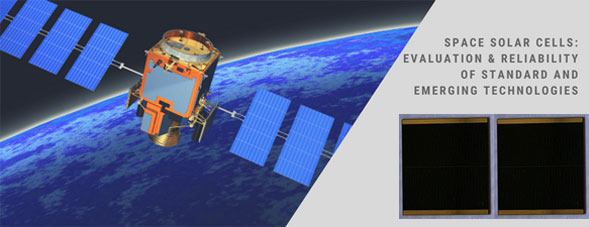With the increasing space competition, higher requirements are put forward for the performance and l-operation life of space main power supply. No matter from the perspective of short-term demand or medium and long-term development, the silicon solar cell as the main space power supply can no longer meet the rapidly developing space demand. Compared with silicon solar cell, arsenic Tsing solar cell has higher photoelectric conversion efficiency, stronger radiation resistance and better high temperature resistance, It is internationally recognized as a new generation of ideal space main source.

The development of ammonium arsenide solar cells has a history of more than 40 years. In 1954, arsenide materials were first found to have photovoltaic effect in the world. In 1956, loferski established the relationship between the solar cell conversion efficiency and the material band gap width eg, that is, the material with eg in the range of 1.4ev ~ 1.6 EV has the highest photoelectric conversion efficiency, and the high photoelectric conversion efficiency can be obtained when the band gap width of ammonium arsenide solar cell is 1.43ev. The early development stage of ammonium arsenide battery was from 1960s to 1970s. Since the 1980s, ammonium arsenide solar cells have entered a high-speed development stage. Russia, the United States, Japan, Europe and other countries have spent a lot of money to vigorously develop and produce GaAs solar cells and made great achievements. GaAs solar cells have entered the batch development stage from the laboratory research stage. By the mid-1980s, arsenide batteries had been used in space systems. Arsenide foam based solar cells have experienced an evolution from LPE to MOCVD, from homogeneous epitaxy to heteroepitaxy, and from single junction to multi junction. The energy conversion efficiency of arsenide shackle solar cells has increased from 9 ~ 10% to 29.3%.
At present, one of the trends of space photovoltaic(PV) is the use of concentrators. Due to the characteristics of high efficiency, high voltage, low current and low temperature coefficient, III-V solar cells are widely used in condensing systems. Space condensing arrays have higher radiation resistance, lower cost, higher efficiency and can reduce the capital investment due to mass production. Moderate condensing degree is very important to obtain high-efficiency solar cells It is very important because it is inconvenient to maintain the battery temperature through radiation cooling. The array design will be more complex to adopt higher condensing degree. For space applications, different types of condensing components have been designed and manufactured. The first is the Fresnel lens condensing panel, which has reached 89% efficiency. The second is the parabolic reflector, which has reached 93% efficiency There are three types of single junction concentrating GaAs solar cell modules. The actual power of AMO is 230 ~ 235w / M '. If multi junction solar cell concentrating modules are used, the actual power can be increased to 280 w / m.